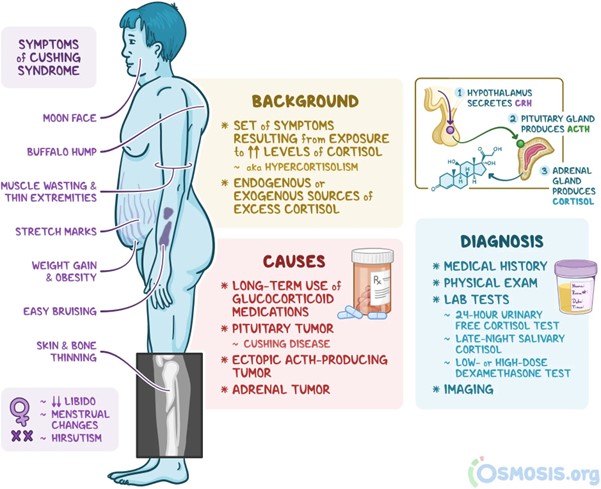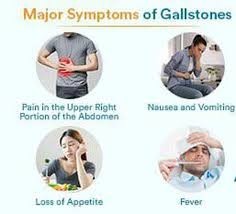A patient is admitted for treatment of Cushing's syndrome. The nurse correlates this disease process to which alteration in endocrine function?
Decreased cortisol level.
Elevated glucocorticoid level.
Decreased aldosterone secretion.
Elevated insulin secretion.
The Correct Answer is B
Cushing's syndrome is a disorder characterized by excessive production or prolonged exposure to high levels of glucocorticoids, particularly cortisol. This can occur due to various reasons, such as the use of corticosteroid medications or overproduction of cortisol by the adrenal glands. Elevated glucocorticoid levels result in a variety of clinical manifestations associated with Cushing's syndrome, including weight gain, central obesity, muscle wasting, thinning of the skin, easy bruising, and impaired glucose metabolism.
It's important to note that Cushing's syndrome can have different underlying causes, such as adrenal tumors, pituitary tumors, or ectopic ACTH production. Regardless of the cause, the common feature in Cushing's syndrome is the excessive glucocorticoid levels, which contribute to the signs and symptoms of the condition.

Nursing Test Bank
Naxlex Comprehensive Predictor Exams
Related Questions
Correct Answer is B
Explanation
The given observations suggest the occurrence of malignant hyperthermia (MH), a potentially life-threatening reaction to certain medications used during anesthesia. MH is characterized by an increase in heart rate (tachycardia), elevated body temperature (hyperthermia), and muscle rigidity. The primary treatment for MH is the administration of dantrolene, which is a skeletal muscle relaxant that helps to counteract the effects of the reaction.
Naloxone (Narcan) is an opioid receptor antagonist used to reverse the effects of opioid overdose or excessive opioid sedation.
Furosemide (Lasix) is a diuretic used to treat conditions such as edema and high blood pressure.
Flumazenil (Romazicon) is a benzodiazepine receptor antagonist used to reverse the effects of benzodiazepine overdose or excessive sedation.
Correct Answer is D
Explanation
Cholelithiasis refers to the presence of gallstones in the gallbladder or bile ducts. The most common symptom is right upper quadrant abdominal pain, which may be colicky or steady. Nausea and vomiting are also commonly associated with cholelithiasis.
Coffee ground emesis and constipation are not typical findings associated with cholelithiasis. Absent bowel sounds may be a sign of bowel obstruction but are not specific to cholelithiasis.

Whether you are a student looking to ace your exams or a practicing nurse seeking to enhance your expertise , our nursing education contents will empower you with the confidence and competence to make a difference in the lives of patients and become a respected leader in the healthcare field.
Visit Naxlex, invest in your future and unlock endless possibilities with our unparalleled nursing education contents today
Report Wrong Answer on the Current Question
Do you disagree with the answer? If yes, what is your expected answer? Explain.
Kindly be descriptive with the issue you are facing.
